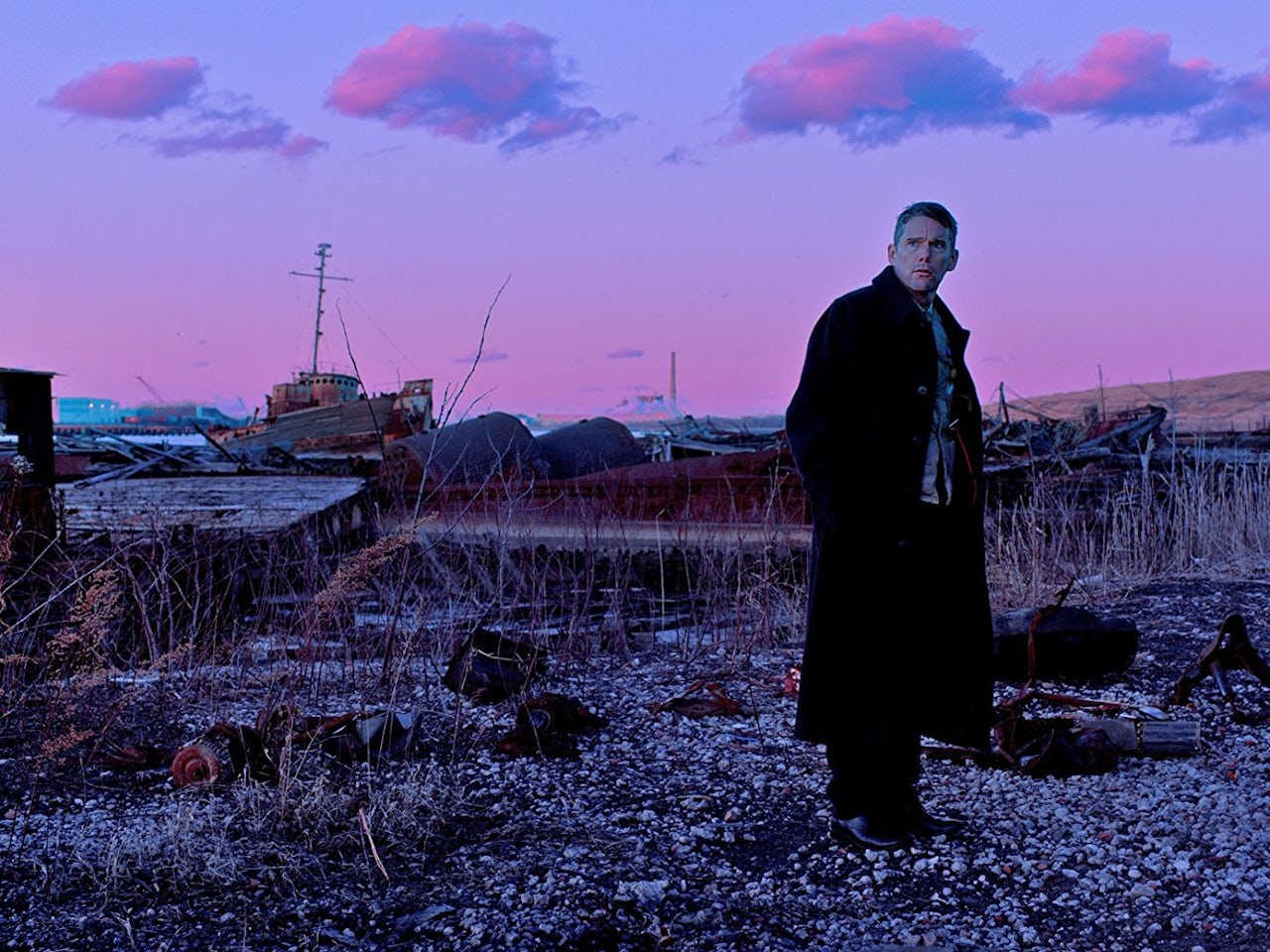In June, while the earth was experiencing a record-breakingly hot summer, a scientific paper was published in Nature Geoscience suggesting the planet’s long-term temperature rise could be double what was previously predicted by climate models. Drawing on the collaborative efforts of 17 international scientists, the same bleak study argued that the effects of climate change, including the submerging of major urban areas and entire Pacific countries, could also be more severe than previously calculated.
As I read the news from my flat, baking in a dusty, almost radioactive heat, all I could do was open Spotify and douse my brain with “Gentle Rain in a Pine Forest,” a soaking wet field recording from Irv Teibel’s Environments series. The pitter-patter of the water and soft ambient wildlife soothed my brain and body, but as I listened, the recording revealed a grotesque quality. I was listening to a future morgue. The soundscape of chirruping birds and splashing droplets wouldn’t exist for much longer in some parts of the world — that particular environment might not even exist now. For a few minutes, the age of ecological crisis sounded like the lush forest scene emanating from my tinny laptop speakers, in all of its sublime, potentially undead glory.
This might seem hyperbolic, or sensationalist, but it’s not. A few months ago, The Outline reported on another study published in Science Advances proposing that lapland longspurs and white-crowned sparrows are waiting longer for their mating partners to arrive in the Alaskan tundra. Combing through audio data, scientists found that some of the songbirds were migrating earlier than their potential partners, producing a discernible gap in the soundscape. Such findings chime with the work of Bernie Krause, a pioneer in the field of soundscape ecology since the 1960s, who has observed how the natural world is gripped by an affliction called dysphonia, a word that in medical terms means an inability to speak. Put simply, as animals and habitats are decimated, the soundscape they produce is lost too.
With an irony befitting what some scientists are calling the Anthropocene (a new epoch based on humanity’s impact on geology and ecosystems), we seem to be finding our voice at precisely the moment non-humans are losing theirs. A new crop of musicians are actively engaging with such ecological issues, crafting a new vernacular capable of articulating what it means to live through the ecological crisis, but also find a way out of it. Björk’s 2017 album, Utopia, is a snapshot of such forward thinking optimism. Drawing on and working in conjunction with the radical eco-philosopher Timothy Morton, Björk crafts a sound and visual world alive with a fusion between humans and non-humans.
Elsewhere, Anohni’s similarly experimental pop engages directly with the repercussions of a global temperature rise on “4 Degrees,” singing of dogs “crying for water” and fish “going belly up in the sea”. Oneohtrix Point Never, a collaborator on the track, explored a similar eco-fatalism on this year’s “Black Snow,”, revelling in the moment of destruction rather than feeling distressed by it. Within avant-garde electronic music, Dominik Fernow’s work as Rainforest Spiritual Enslavement explores a persistent low-level anxiety surrounding nature, infusing it with both a dubby dread and shimmering magic.
Listen to all the songs mentioned and an interview with Lewis Gordon on The Outline World Dispatch.
Recording under the alias Dialect, Andrew Hunt’s textured electronic compositions deal directly with modern day environmental anxieties and the instability of the natural world. His latest record, Loose Blooms, sounds like an irradiated artifact from No Man’s Sky, oscillating between uncanny, treated field recordings and rich synthwork. Speaking to me from his home in Liverpool, Hunt described how he was inspired by looking at rocks, their compressed layers revealing a long-form story. It got Hunt thinking about geological conditions of change. “What joins all these things together is the idea of co-dependence and mutual causation,” he explained. “You get that idea in all sorts of different disciplines — Buddhism, systems theory, cybernetics — but I think it's most apparent in ecology. When you're in nature it's obvious.”
“It's so monumental that it's quite difficult to approach for people. And I really, really, sympathize with people who find it difficult to care or just understand it.”
Loose Blooms also tackles physical changes in perspectives. “Thirlmere Wash” starts out with a wide ambient landscape before zooming in multiple degrees, to the point where the listener is subsumed within a twinkling microworld. For Hunt, the compositional process is one way for him to wrap around the enormity of the problem, to process how climate issues require a wholesale rethinking of scale. “It's so monumental that it's quite difficult to approach for people,” he continued. “And I really, really, sympathize with people who find it difficult to care or just understand it.”
Ukrainian label Eco Futurism Corporation look to the future for such understanding, wrapping club tropes and abrasive sound design around CGI-inflected visions of the organic. Sharing a visual lexicon with Douglas Trumball’s 1972 eco sci-fi classic Silent Running, filtered through a shiny, early 2000s video game aesthetic, the label’s heavy use of narrative posits a scenario where “wild” life has ceased to exist, replaced by corporate vegetation. Welcome To Paradiso, a dense, hallucinatory short film accompanying Chino Amobi’s 2017 album Paradiso invokes climate change iconography transposed to the future. Director Rick Farin depicts the submerged city, the rainforest and barren highway, set against Amobi’s harsh but often beautiful electronic compositions often centered on the modern effects of colonialism. California-based artist, Elysia Crampton, a label mate of Amobi’s, often weaves the modern-day threat of colonial violence into her experimental electronic music, an issue inseparable from the history of ecological crisis.
Fellow Californians, Suzanne Ciani and Kaitlyn Aurelia Smith explored softer textures on their 2016 album Sunergy, channeling solar rhythms through the Buchla synthesizer. But with their respective solo work, the pair explore different elements of the natural world. Ciani’s 1982 album Seven Waves is a gorgeous evocation of coastal sounds while Smith’s 2016 album EARS is the sonic equivalent of a lush primordial forest, full of knotty, fizzing melodies. Earlier this year, Smith started her own label, Touchtheplants, with an idiosyncratic pitch exploring what an existential conversation between a plant and a human being might sound like.
Los Angeles-based pair Joe Patitucci and Jon Shapiro are attempting to turn that conversation into a reality with Data Garden, where they attach biofeedback sensors to the leaves of plants, measuring micro fluctuations in conductivity on its surfaces (most similar to a lie detector test). Engineer and developer Sam Cusumano created technology that could turn the “leaf data” into MIDI that could control hardware and software synthesizers, as Patitucci then developed algorithms capable of turning the data and tech into softly ambient plant music. The resulting process is available as MIDI Sprout, with one iteration plugging straight into an iPhone. For Shapiro, it’s a means of lessening the gap between humans and non-humans, which he views as an important step in abating current climate issues. “There's all sorts of bureaucratic reform that is great but it's really gonna be a shift in consciousness that's really going to facilitate change on a major scale,” he told me. “And that fundamental change is overcoming the separation that we have.”
Less nebulous is Oliver Peryman’s work as Fis and his label, Saplings. The New Zealand-born electronic artist told me how we’re living through what Rob Hopkins calls the “petroleum interval”, a short period in history defined by the discovery of oil and the construction of a whole way of life around it. Peryman asked me whether we should be surprised that one of the music industry’s primary carbon footprints is the imprinting of music into petrol-based products, i.e. vinyl, tapes and CDs. Despite the decline of physical music goods, the problem persists in the form of silicon microchips and resource-guzzling server hubs that power an always networked industry.
Peryman’s approach with Saplings is to restore a carbon balance. Entering into a partnership with The Eden Projects, 100 trees get planted for every album bought on the label’s Bandcamp page. Its first release, a collaboration between Peryman and Māori sound artist Rob Thorne, embodies an altogether different conception of a physical music format. In Madagascar and Haiti, it takes the form of mangrove swamp forest restoration. “Mangrove swamps are some of the most diverse ecosystems on the planet,” Peryman explained. “So in one sense there's a few thousand trees being planted but the knock-on effect is indefinite. All sorts of species start to return to those areas.” Such an approach encourages biodiversity but also incorporates the region’s local population. “Eden work with people on the understanding that a kind of material prosperity is intertwined with an ecological prosperity. In that sense, it's alleviating poverty as well.”
There is, of course, a western privilege at play with the extent to which climate issues affect more vulnerable groups disproportionately — often within the Pacific and South America — than others around the globe. It is, all too often, a deficiency in our understanding of ecological crisis, too — the fact that others are already living with its real, often destructive consequences. Anja Kanngieser, a sound artist and academic, is exploring climate justice issues in the Pacific through the Australian Centre for Cultural Environmental Research at the University of Wollongong. Speaking to me from Australia, they described a formerly colonized region, many countries within it having only gained their independence in the 1970s and 80s. The area lives with the effects of extractive industries such as mining and deep seabed exploration, alongside the nuclear testing legacies of the France, Britain and USA throughout the Marshall Islands.
Kanngieser’s sound art encompasses oral testimony, field recording and data sonification to amplify climate justice issues, weaving a narrative around the people and soundscapes of the Pacific. Their work consciously diverges from the pristine natural soundscapes feeding into conservation practices, which are founded on a western idea of nature at odds with the outlook and needs of communities in the Pacific. “There's not much discussion about how that particular idea can be really damaging for different kinds of people," they said. “There are Indigenous communities who rely on their environment for natural resources.”
When I push Kanngieser on what the sound of ecological crisis sounds like to them, they pause for a few moments before answering. Thinking back to a time on Kiribati, an island under acute threat from rising sea levels, Kanngieser said: “It was just a normal high tide and the water was just washing over the road as the cars were driving through. I was standing on a beach, recording the ocean and kids were playing on the sand and running away from the waves. People are just living their lives in spite of being inundated. It’s the sound of that just being a normal way of life.”


